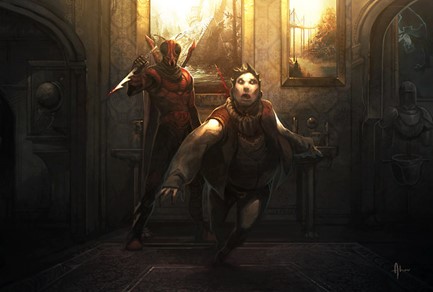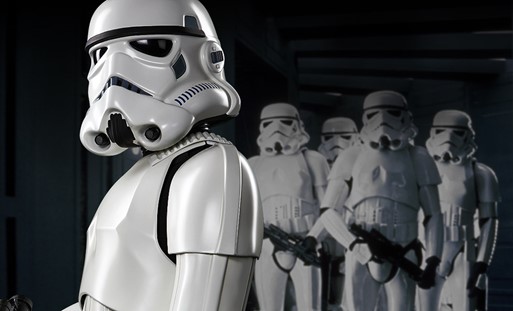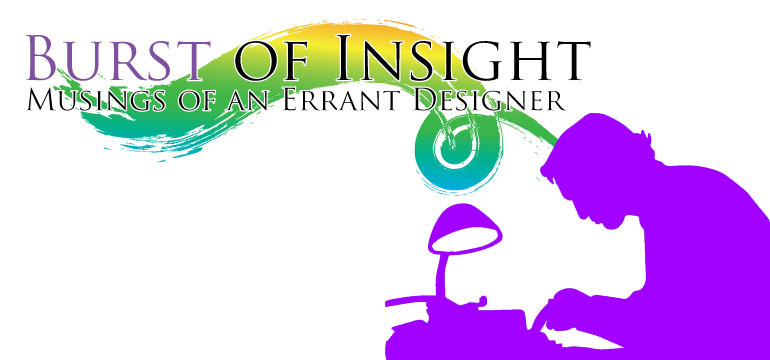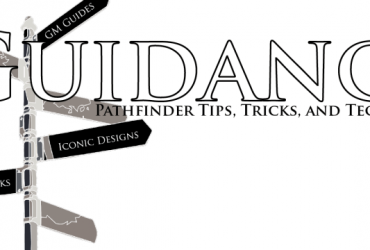I used to run one-shot RPG games frequently, as filler between campaigns, holiday events, and sometimes just because players were free on an unexpected night. I still run a fair share of one-shot games and (as then) most are adventures I plan and design rather than published modules. Recently, I had call to run a one-shot game for some friends and discovered I’m a little rusty. So let’s learn from my recent mistakes and see just what makes a good one-shot.
Good one-shot games and good medium- to long-length campaigns have different needs and slightly different GM skills. A good long-term game benefits from a slow burn and strong character development but a one-shot needs to hit the ground fast and showcase every PC in its four to six hour runtime. I like to think of ongoing campaigns as serial television and the one-shot or limited campaign as a summer blockbuster. The following tips are my touchstones for one-shot games gleaned from years of watching movies, playing RPGs, and reading GM tips.
Start In Media Res
If you’ve been gaming for any length of time or are a student of film you may have heard the phrase “In media res.” Or, “into the middle of things,” in Latin and tends to refer to stories that start in the midst of action rather than the very  beginning. Star Wars and James Bond movies make good use of this trope. When the action opens on these movies we (the audience) are less concerned with “how did our heroes get here?” But far more interested in “What’ll happen next?”
beginning. Star Wars and James Bond movies make good use of this trope. When the action opens on these movies we (the audience) are less concerned with “how did our heroes get here?” But far more interested in “What’ll happen next?”
Starting a stand-alone game in the middle of the action is a useful technique. When you drop your PCs right into the action their players (your audience as GM) will be focused on “what happens next?” Starting with interesting or exciting events hooks the players quickly and means you keep your story zipping along.
Keep the Pacing Fast
 Pacing in all campaigns is important. Most GM advice is to keep the pace brisk and exciting but the truth is in long arc campaigns you can slow down and do player driven side plots and have nights where the exciting thing is a lot of (dare I say it) role-playing. When you run a one-shot game role-playing is still vital but you don’t want it bog down your story development or action scenes. Sometimes players will slow down the pace of your game. They’ll obsess over a detail you’ve described certain it’s an important clue, They’ll over plan or otherwise proceed too cautiously, or maybe they’ll bicker of the right course of action. It’s up to you to spice things up and keep the action moving even if they seem to want to slow down.
Pacing in all campaigns is important. Most GM advice is to keep the pace brisk and exciting but the truth is in long arc campaigns you can slow down and do player driven side plots and have nights where the exciting thing is a lot of (dare I say it) role-playing. When you run a one-shot game role-playing is still vital but you don’t want it bog down your story development or action scenes. Sometimes players will slow down the pace of your game. They’ll obsess over a detail you’ve described certain it’s an important clue, They’ll over plan or otherwise proceed too cautiously, or maybe they’ll bicker of the right course of action. It’s up to you to spice things up and keep the action moving even if they seem to want to slow down.
Ramping up the excitement and pace isn’t hard. Maybe the bad-guys kick in the door, this works equally well in a noir-themed investigative adventure, high fantasy, or pulp style games. Whether it’s Nickie the Nose and his goons, A team of Red Mantis Assassins or the Galactic Empire hardly matters. What matters is the bad-guys are on to the heroes and the PCs must Fight or Flee. Either way, the pace stays lively.
Another option is if the PCs are hung up on the clues you’ve provided you can prod them forward with new information to tip their investigations in the right direction. Have an additional witness come forward, let them discover one more clue as their leaving the current location or if one or more of the PCs has contacts or allies in the area have one of those NPCs show up and present the new information.
Sometimes the game slows down as players engage with your NPCs. For a one-shot, it’s best to run your NPCs as busy people. While it might be tempting to linger with an entertaining NPC a bit of impatience on the NPCs part can keep the action moving forward. Think of your typical police procedural the witness always needs to go pick up their kid, get back to work, or has some pressing issue that keeps the story moving.
Long campaigns benefit from your attention to detail but in a one-shot all the little details might eat into your time at the table. Feel free to transition from one scene or location to another with cinematic terms like “fade to back,” “cut to…” The 3era Eberron books talk about traveling the red line, much as we see in the Indiana Jones movies. This is great advice if there is a lot of overland travel in your one-shot game as well. If the adventure you’re running has a dungeon-like locale consider focusing on key encounters rather than exploring every inch in detail. You can summarize and hand wave much of the exploration.
If you have an un-keyed version of your map you might consider showing it to the players. This way, you can get guidance from the players regarding where generally they want to explore and you can summarize what they found in the less interesting regions of your map. Then focus tightly on the important parts whether that be where monsters lair or an ancient mural with the necessary clue to finish the adventure.
If you are running tight on time, you can even revisit the trope of in media res. Once the PCs have uncovered the dastardly plot of the Cult of Rovagug roll for initiative and cut right into the fight at the gates of the enemy temple. Now all the PCs need to do is get inside.
Don’t Let the Rules Become a Drag

These disappointed Stormtroopers just found out they’d been replaced by minions who hit thier targets.
You have a very limited time and Pathfinder has ten years’ worth of books. The size of the Pathfinder library can make finding a particular rule a daunting task. Even if your table is normally used to playing with the rules as written and will happily spend 30 minutes searching for the exact right answer don’t fall to this temptation. Use your understanding of the rules to make a quick call on whatever is bogging down gameplay, whether it is a DC, an item’s hardness, a monster ability, or something else. Just make a call and move on.
To speed up combat but keep it exciting and cinematic, you might even consider running encounters with D&D style minions to raise the stakes but not over complicate things at the table. Give these minions 1 HP each and if you want them to be a little hardier maybe DR 5 or 10 depending on your PCs level. This approach makes for more exciting minions than padding the encounter with low CR Stormtroopers or goblins that really don’t threaten the PCs. Plus, this option requires very little bookkeeping on your part.
One Final Tip
With time so short in a one-shot game it’s easy to accidentally overlook a particular PC’s niche especially if you’ve planned a lot of action scenes and that player made a social character or puzzle solver. Make sure you have things for the those characters to do that lets them shine as brightly as the characters who specialize in combat.






